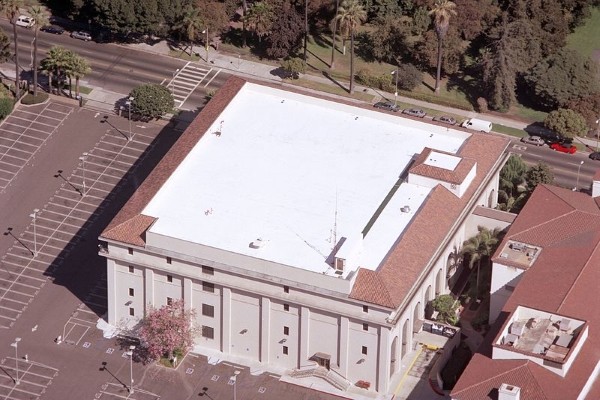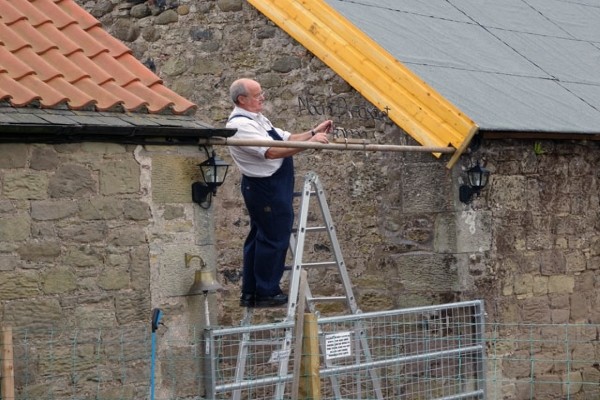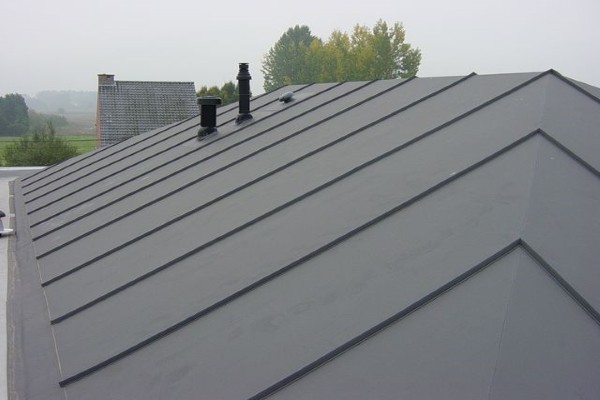Do you know what is single ply membrane and advantages you’ll get using them? Many commercial properties find these membrane roofs cost-effective. Their durability, exceptional material, and longevity make them excellent investments. However, will it work on your residential home?
Unlike commercial properties, residential homes require high curb appeal roofs. In addition, they have to be durable and last long enough with the property.
If you wish to install it on your home, it is vital to know what is single ply membrane and advantages you can get. Read on to find out more about them here!
Different Kinds of Single-Ply Roofing Systems
There are three different kinds of single-ply roofing systems. Each one has distinct advantages and disadvantages over the other. Get to know all about them in this section.
Ethylene Propylene Diene Monomer (EPDM)
The answer most will have to the question “what is single ply membrane and advantages you’ll receive” is the EPDM roof.
EPDM is also known as rubber roofs. Contractors consider them the most cost-efficient roofing material. In fact, they will recommend them often because of their affordability and durability.
Manufacturers use recycled rubber sourced from discarded vehicle tires and waste materials. Then, they mix the sheets with slate and sawdust. Thereafter, machines flatten and produce the material in flat and thick seams.
EPDM roofs comply with the Active Standard D4637 and D4637M standards. These guidelines ensure the roof can withstand hailstorms, provide airtight insulation, and reduce UV penetration into any home.
Rubber roofs do achieve these benefits if professional contractors install them effectively. While it is lacking in UV protection and curb appeal, the $0.4 per square foot cost and 30-year lifespan of EPDM roofs makes them worthwhile investments.

Thermpolastic Polyolefin (TPO)
The second most common answer to “what is single ply membrane and advantages you receive.”
Manufacturers produce TPO in the same manner and material as EPDM roofs. However, it is combined with special additives aside from slate and sawdust. These include fiberglass fillers, carbon fibers, and talc. In consequence, the material becomes stronger than EPDM and gives it a longer lifespan of 40-50 years.
TPO comes in different colors giving homeowners better curb appeal. In addition, the colors allow TPO roofs to reflect UV rays better than EPDM. Majority of manufacturers follow ASTM D6878 and D6878M as a standard in producing TPO roofs.
The guidelines ensure TPO roofs can withstand strong hail and windstorms. Additionally, the roofs must have unblemished colors despite exposure to extreme weather conditions.
Polyvinyl Chloride (PVC)
PVC roof manufacturers use the same piping material in creating these single-ply membranes. However, unlike EPDM and TPO, there is no rubber component on PVC roof seams. It is made of high-grade plastic.
In contrast to EPDM and TPO roof staple and nail installations, PVC uses heat-welding. The process fuses the material to the roof structure. In consequence, the roof provides better property insulating capabilities. This helps homes save more from utilities.
In addition, PVC roofs require less maintenance and have a lifespan of over 50 years. However, they are the most expensive single-ply membrane.

Single Ply Membrane and Its Numerous Advantages
Residential homeowners will likely ask the question “what is single ply membrane and advantages for homes?” The answers are right below!
Excellent Insulation
Contractors who install single ply membrane roofs properly guarantee excellent insulation. While EPDM roofs are affordable, they offer the relatively least quality of insulation. However, they still introduce an airtight seal. Doing so helps them prevent leaks from entering any home and keeps the air inside.
TPO roofs offer excellent UV protection and insulation. With an effective installation, they will prevent outside temperatures from penetrating properties.
PVC roofs offer the best insulation. However, they are the most expensive single-ply membranes available. In addition, they offer the longest single-ply membrane roof lifespan possible.
Does Not Catch Fire
Single-ply roofs are non-flammable. Unlike petroleum-based asphalt shingles and roofing possibly melting and catching fire, membranes will not burn up quickly.
In addition, some manufacturers provide specialty membrane coating. Most of these coats are EPDM-oriented. If contractors apply these coats effectively, EPDM roofs will have the same advantages as TPO roofs.

Lightweight
Single-ply membranes are the lightest. They weight almost similar to metal roofs. In fact, they weigh a fraction of a full asphalt shingle roof or a tar & gravel roof.
One distinct advantage single-ply roofed homes have is saving up on additional roofing joists. Both asphalt-decked and tar & gravel roofs require additional joists. These ensure the roof will not cave into the house upon installation.
Minimal Maintenance Required
All membranes provide excellent insulation and watertight seals. The artificial material make-up of each roof prevents the growth of molds, mildew, and fungi harmful to the inhabitants of the property.
In addition, artificial membranes do not expand and contract during the changing of seasons. This allows contractors faster installation. Homeowners have to provide less maintenance on the roof too.
Will Your Property Have an Advantage With Single-Ply Roofing Systems?
If you’re asking “what is single ply membrane and advantages for residential homes,” then you’ll want to know the answers here.
Curb Appeal
Residential homes require roofs with added curb appeal. Rubber roofs might not be the best option, but colored variants of TPO and PVC roofs will provide on-par requirements. With plenty of colors to choose from, homeowners will have the same curb appeal traditional roofing materials afford. In addition, they will enjoy a cost-effective, durable, and long-lasting roof.

Insurance Liabilities
Replacing your old roof with a single-ply membrane may introduce insurance complications. You will enjoy the benefits roof membranes provide. However, you can lose protective benefits you enjoy. Therefore, consult your insurance adjuster regarding your roof replacement.
In-Location Weather
Single-ply membrane will withstand harsh hailstorms. However, frequent hailstorms require repeated replacements. If you live in these areas, single-ply membranes are excellent and cost-effective solutions in such cases.
Conclusion
Now that you know the answers to “what is single ply membrane and advantages I get,” you can now find the best single-ply roofing material for your home.
However, make sure the best contractors install your roof. All roofing materials require excellent roofing installations because it affects the lifespan and durability of any roofing material.

